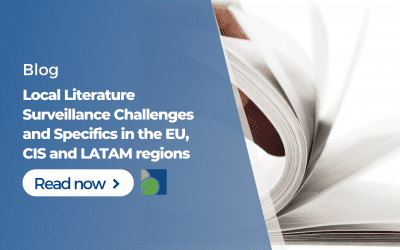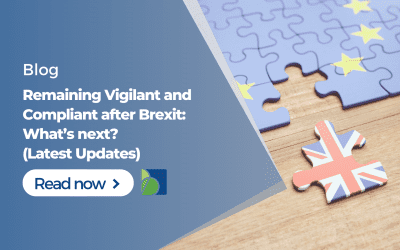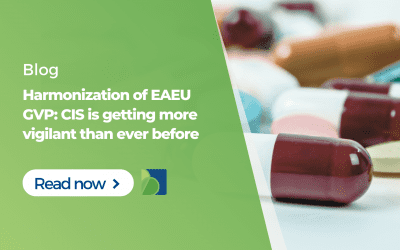
Pharmacovigilance, also known as drug safety surveillance, is the process of monitoring, identifying, and assessing medicinal products’ potential risks and benefits. It is an essential part of ensuring the safety and efficacy of drugs for patients and healthcare providers. If we’re approaching the matter creatively, the history of pharmacovigilance is long and complex, tracing back to ancient civilizations and evolving through centuries of medical discoveries and advancements.
What is Pharmacovigilance in modern day society?
Pharmacovigilance is the process of monitoring the safety of medicines after they have been approved for use, including detecting, assessing, understanding, and preventing adverse effects or any other drug-related problems. It is an ongoing process that involves collecting, analyzing, and disseminating information about the safety of medicines, aiming to improve patient care and public health. However professional that may sounds, remember we’ve come a long way. Let’s dive into the history of pharmacovigilance.
The history of Pharmacovigilance
The earliest known records of pharmacovigilance date back to ancient civilizations such as Egypt, Greece, and Rome, where doctors and healers recorded the effects of various medicinal plants and substances. These ancient healers used these records to identify which treatments were most effective and which had dangerous side effects.
However, it was not until the 19th century that pharmacovigilance began to take shape as a formalized field of study. The advent of industrialization and the mass production of drugs increased the number of adverse drug reactions (ADRs) reported. In response to this, we established national and international organizations to monitor and study the safety of drugs.
One of the earliest examples of modern pharmacovigilance was the establishment of the Therapeutic Index in the United States in the 1920s. We used this index to evaluate the safety and efficacy of drugs, and it served as the foundation for developing the modern drug safety system.
In the 1960s, the World Health Organization (WHO) established the global ADR monitoring program, the WHO Collaborating Centre for International Drug Monitoring. This program aimed to collect and analyze ADR reports from around the world to identify potential safety concerns and improve the safety of drugs.
The thalidomide crisis of the 1960s. This tragedy, in which thousands of babies were born with congenital disabilities after their mothers took the drug thalidomide during pregnancy, brought the issue of drug safety to the forefront and led to the creation of regulatory systems for ensuring the safety of medicines.
In the 1970s, the United States Food and Drug Administration (FDA) implemented the Adverse Drug Reaction Reporting System (ADRRS), which required pharmaceutical companies to report any adverse reactions associated with their drugs. This system served as a model for other countries and remains an integral part of the modern pharmacovigilance system.
In the 1990s, the International Conference on Harmonisation of Technical Requirements for Registration of Pharmaceuticals for Human Use (ICH) was established to harmonize the regulatory requirements for the approval of drugs in different countries. One of its key objectives is to ensure the safety and efficacy of drugs, and it has developed several guidelines and standards to support this goal.
In the 1995, the European Medicines Agency (EMA) was established, and it began to play a leading role in regulating drugs in the European Union. One of its essential functions is the monitoring and assessment of the safety of drugs, and it has implemented several systems and programs to accomplish this goal.
In the early 2000s, the FDA and the European Medicines Agency (EMA) introduced the concept of a Risk Management Plan (RMP), which is a document that outlines the measures that pharmaceutical companies will take to ensure the safe use of their products.
The Vioxx scandal. Another tragic event that relates to pharmacovigilance is the case of the anti-inflammatory drug Vioxx (Rofecoxib). In 2004, a study showed an increased risk of heart attack and stroke in patients taking the drug leading to the drug’s withdrawal from the market. It was later estimated that the drug had caused more than 27,000 heart attacks and sudden cardiac deaths.
This event was a significant pharmacovigilance incident as it highlighted the importance of continuous monitoring and risk-benefit evaluation of drugs even after they have been approved and marketed. It led to increased scrutiny of other COX-2 inhibitors and also led to changes in the way clinical trials were conducted and in the way the FDA evaluates the safety of drugs. It also led to the creation of new regulations and guidelines for pharmacovigilance in the US and Europe, emphasizing the need for better post-marketing surveillance.
Professionalization in Pharmacovigilance
A number of different events and developments have accelerated the professionalization of pharmacovigilance. Some of the key factors include:
-
The increased use of new technologies:
With the development of new technologies, such as electronic health records and big data analytics, it has become easier to collect, analyze, and share information about the safety of medicines, which has helped to improve the effectiveness of pharmacovigilance.
-
The increase in global collaboration
With the globalization of the pharmaceutical industry and the rise of international organizations such as the World Health Organization (WHO), there has been an increase in collaboration among different countries and organizations to share information and best practices about drug safety.
-
The increased regulatory requirements
In recent years, regulatory bodies like the U.S. Food and Drug Administration (FDA) and the European Medicines Agency (EMA) implemented stricter guidelines for pharmacovigilance, which has led to greater focus on drug safety and professionalization of the field.
All these events and development have helped to raise awareness of the importance of pharmacovigilance, and to improve the processes and systems in place to monitor the safety of medicines.
How will Pharmacovigilance evolve?
In recent years, advances in technology and data science have greatly improved the ability of pharmacovigilance systems to detect and analyze potential safety issues. For example, electronic systems for reporting ADRs have been implemented in many countries, and data mining techniques are being used to identify patterns and trends in ADR reports. Additionally, the use of big data and artificial intelligence (AI) is expected to further improve pharmacovigilance systems’ ability to detect and analyze potential safety issues.
Overall, the history of pharmacovigilance is a story of evolution and adaptation. From ancient civilizations to modern times, the field has grown and changed to meet the needs of patients and healthcare providers. Today, it continues to play an essential role in ensuring the safety and efficacy of drugs, and we expect it to continue to evolve and improve.
No Results Found
The page you requested could not be found. Try refining your search, or use the navigation above to locate the post.








